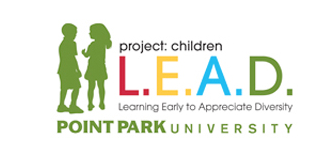Lesson 4 Physical Differences Lesson Series

Curriculum | Resources | Workshops | Activities | About Us
Physical Differences
Student Teachers: Jessica Zuber and Deanne Lowe
Project Children L.E.A.D. Director: Dr. Vincenne Revilla Beltran
Subject Area: Diversity
Grade level: Kindergarten (Ages 5-6)
Length of Lesson: 60 minutes
I. Learning goals:
A. Children will be able to recognize physical differences and similarities: such as hair, eye and skin color.
B. Children will be able to recognize differences in height and size
C. Children will become familiar with different types of physical disabilities
D. Children will be able to express movement through activities, by using crutches and a wheelchair to get from place to place and by using sign language cards to help them communicate with one another.
II. Related Pennsylvania department of education standards:
Early childhood learning continuum indicators:
2.3. Measurement and estimation (Mathematics)
- Types of measurements
- compare characteristics
1.6. Speaking and listening (Language Arts)
- listen to a selection of literature
- relate to similar experiences
10.1. Safety and Injury prevention (Health, safety and Physical education)
- identify and use safe practices in physical activity settings 10.5. Concepts, principles and strategies of movement (Health and Physical education)
- Recognize and use basic movement skills and concepts.
*combination movements
3.2. Inquiry and design (Science)
- describe objects in the world using the five senses
* Recognize observational descriptions from each of the five senses.
10.4. Physical activity (Physical Education)
- Recognize positive and negative interactions of small group activities
* Roles
* Task participation
III. Objective:
After today's lesson children will be able to recognize physical differences in appearance and disabilities. They will experience having physical disabilities. Students will compare similarities and differences. Students will also learn how to use basic sign language to communicate with others.
IV. Materials
Book: It's ok to be different by: Todd Parr
One large piece of paper - long enough to cover a blackboard (To make their own rainbow on the board)
Yarn (yellow, brown and black)
Glue Sticks
Plastic eyes (variety of colors)
Wheelchair
Crutches - Child size (adjusted to their height) and Adult size (for demonstration of appropriate usage)
CD player
CD: We all live together By: Greg and Steve Vol.5
Measuring tape
Construction paper (skin tone colors)
Markers
Sign language cards
V. Procedure:
- Students will sit on the carpet
- Teachers will thoroughly review classroom rules
- Teacher will read the book; it's ok to be different by: Todd Parr.
- After reading the book, teachers will ask what differences the students can recall from the book and then students will be asked to identify physical differences they see in each other, such as eye color, hair color, scars, f freckles, ect...
- Teachers will talk about the meaning of the rainbow on the board: How different colors make up one rainbow, just like different characteristics make up one person and that many different people make up one community.
- The CD we all live together will be played in the background during the art activity.
- Activity one:
Teachers will measure the children's height and shoe size. The individual measurements will be written on the board next to their names. Each child will get to choose the color they want their measurements to be written on the board with.
- Art activity:
Students will then move to the art table. Two students will be partnered together and will then draw their partner's unique characteristics. Each child will choose a piece of skin toned construction paper to match the color of their partners' skin tone. They will then create a portrait of their partner by adding eye color, hair color and any unique characteristic they see such as: scars or freckles.
- At the end of the Art lesson students will position their faces on top of their height marking on the board.
- Children will then sit back on the carpet and have the opportunity to tell their classmates about their portraits. They will notice that they make up their own rainbow with differences, through discussion differences.
- Students will then compare the similarities and differences of their projects. - Teachers will then inform the children that not all differences are about physical appearance.
- Students will learn how to communicate in sign language by using sign language cards. The teacher will display examples of word cards and show the appropriate sign for the specific object or word such as colors, animals and family members. Teachers and students will sign the words on the cards.
- Teachers will educate the children on a variety of disabilities but also about physical disabilities.
- Children will then get the opportunity to sit and move in a wheelchair and learn how injured individuals get from place to place on crutches. The teachers will demonstrate how to properly use the crutches by demonstrating with the adult size pair. Children will use the child size crutches for practice.
VI. Close:
Today we have learned that physical differences can be about appearance, and also about specific disabilities. We have also learned that all people are different but regardless of our differences we all make up a family of friends. We learned that people can move in different ways and some people have to find alternative ways to do simple tasks. Overall, we have learned that our differences make us unique.

